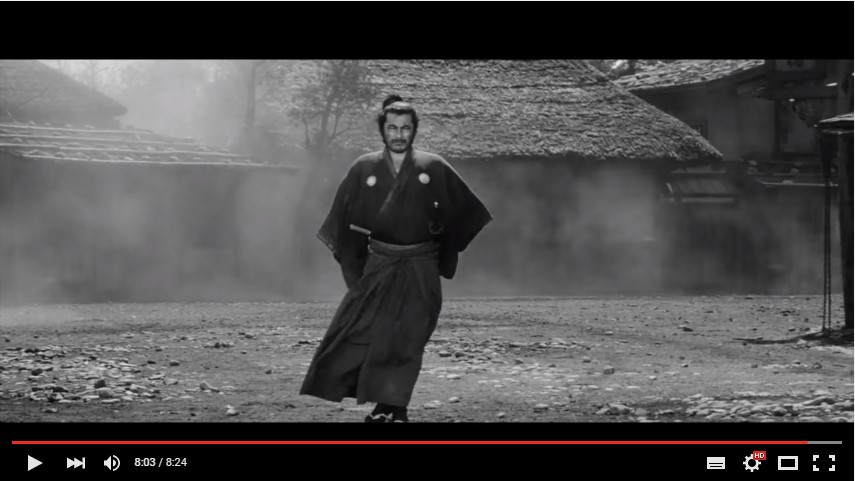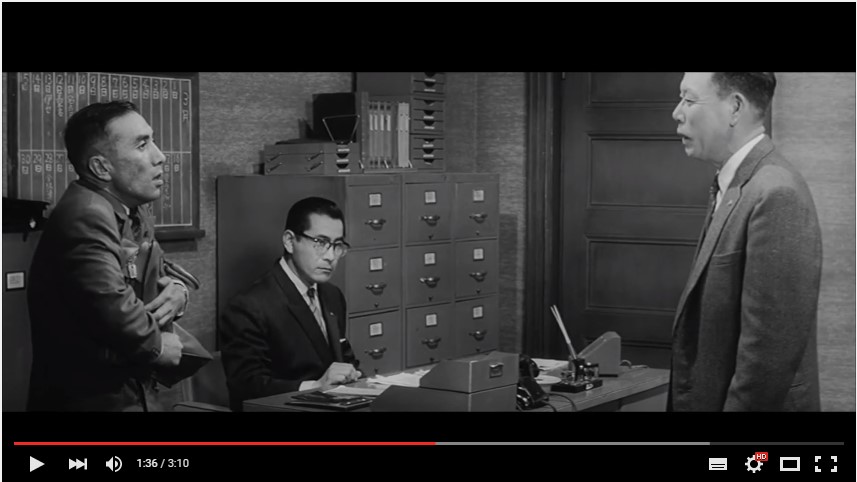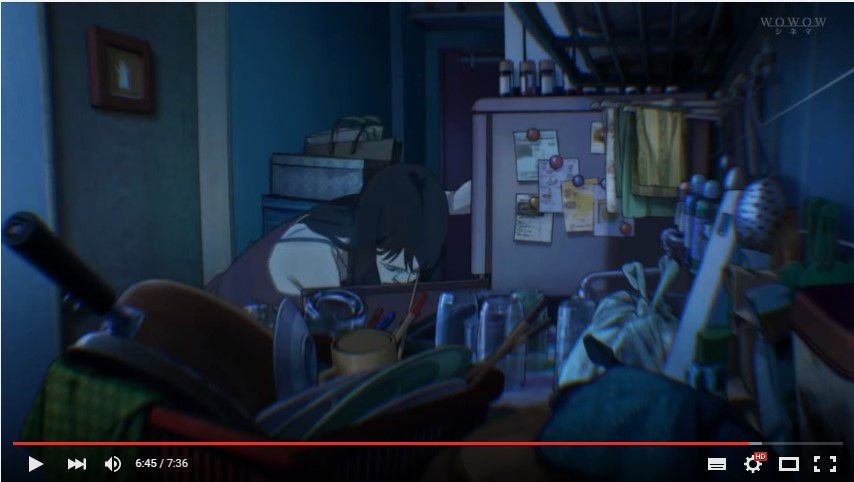Composing Movement
Firstly, I wanted to focus on movement. I wanted to make sure not a single scene passed without some form of movement, excluding camera movement. I wanted the audience's attention to be grabbed from the beginning of the production and during the one minute animation in which the story takes place it was ideal for me to give the audience something to look at and focus on. Making sure to manipulate the direction in which they are looking and the objects they are looking at. It was mentioned in the video that Japanese director, 'Akira Kurosawa' uses weather in his scenes in order to set the tone of the scene and reflect and empathise on characters emotions and dictate the atmosphere in the film. He does this through use of snow, rain, fire, smoke, fog and wind. It would be unreasonable and detrimental to the production to go this far, but I definitely think a certain ambience could be achieved and a level of detail added through the use of weather, in particular perhaps; fog, wind and possibly smoke or rain. There are several establishing shots and environmental shots where this could be applied, especially in combination with the important using of day and night throughout the animation. It also means that I want objects in shots that would other wise be still or stationary to move, either affected by the weather, by a character interacting with them or otherwise. Furthermore, when it comes to movement I wanted to make sure the characters had interesting and dynamic movement - and do interesting things. I have included one scene where a pig vaults the fence around a pig sty, and I found this kind of movement in the scene much more interesting than just a walk or run cycle for example. As well has having characters move in an interesting way I wanted the characters movement to interact and flow in sync with one another. I suppose this is more of a point based around realism and just general interest in a scene but I think the movement of individual characters when combined together can change the impression of a scene on the audience dramatically.

The Geometry of a Scene
This video again revolves around a film by Akira Kurosawa. Specifically the film 'The Bad Sleep Well' (1960). This video looks closely at a scene involving three characters and the way they interact in a particular instance, with some interaction and some dialogue. This was relevant to my project and my work mostly due to the fact there is three characters, however the principles involved could be applied to a multitude of different scenarios. I learnt a lot about staging and character interaction during this example and furthermore it was compared to some other scenes from other films that have a similar set up but perhaps haven't executed it as well, or in such an interesting way. The 'Geometry' of the scene relates to the way the story of the scene is told (of course with the help of props and acting) through the camera, and the set up of the characters throughout the duration. The shapes made throughout the scene were worth looking at closely and as there were three characters, a triangle works well in making a scene more interesting to the audience. I attempted this particular set up in the scene where my three characters discuss their plans with the camera shooting from above. I thought the triangle formation I created was quite appealing, and worked much better than if I had for example just shot each characters actions shot by shot. The way this was set up in mine and Wing's animation showed the interaction of characters in their environment a long with the props, which in turn hopefully told the scene well, and in an interesting way to the audience.

Editing Space and Time
This video looks closely at the work of Japanese film maker, Satoshi Kon. Who interestingly has delivered incredibly strong imagery across his work and has influenced film makers like Darren Aronofsky and Christopher Nolan. The main themes of his films include the way people live multiple lives occasionally through fantasy. What I learn from this video, and what had the biggest effect on me was the way in which he edits his films. Editing is something that I want to utilise to make the sequence of the scenes in mine and Wing's production the best they can be, and of course encourage the delivery of the narrative to be the best it can be. The way in which Satoshi Kon has done this is using techniques such as; use black frames to jump cut, objects to wipe the frame and rewind scenes. Of course these must be used sparingly and backed with thought, but the kind of inventive methods that have been applied in his films in order to confuse and create interest with the audience is something that I want to attempt to emulate in our animation. If I can achieve anything note worthy or interesting with the use of editing and the infinite ways sequences can be strung together in a counter-intuitive like Satoshi Kon does throughout his work I will be happy. I think what I like about this type of editing is it catches the audience off guard and allows for more fluid storytelling and transitions between scenes. It would be good if we could create smooth and seamless transitions of a similar nature to increase the flow of the story, especially since it's an especially short animation.

Visual Comedy
I think mine and Wing's animation and story by nature is one that contains humour. The characters are anthropomorphic pigs, trying to break out of a barn and the animation ends with a punchline. From the beginning the concept we had has concerned me in the sense that firstly, I've never created anything based around humour and comedy before and also, I want to make the delivery of the punchline as strong as possible. I looked at this video focused on visual comedy to help me find the best way to achieve this. This video looks specifically at Edgar Wright - a director I really like in order to illustrate a good example of a director that uses a full range of what is possible. The principles displayed in the video suggest that comedy has to be inventive and has to be told in an interesting and unsuspecting way to make the audience appreciate it. Furthermore, comedy can be achieved by what's out of the frame. Using a simple cut or pan to bring in the punch line is an effective way of producing comedy on screen. Another few things listed that I want to consider and use where I can include; things entering the frame in funny ways, people leaving the frame in funny ways, well timed sound effects, action synchronised to music and overly dramatic lighting. Hopefully I can utilise the frame in a way where the comedy is communicated effectively.

No comments:
Post a Comment